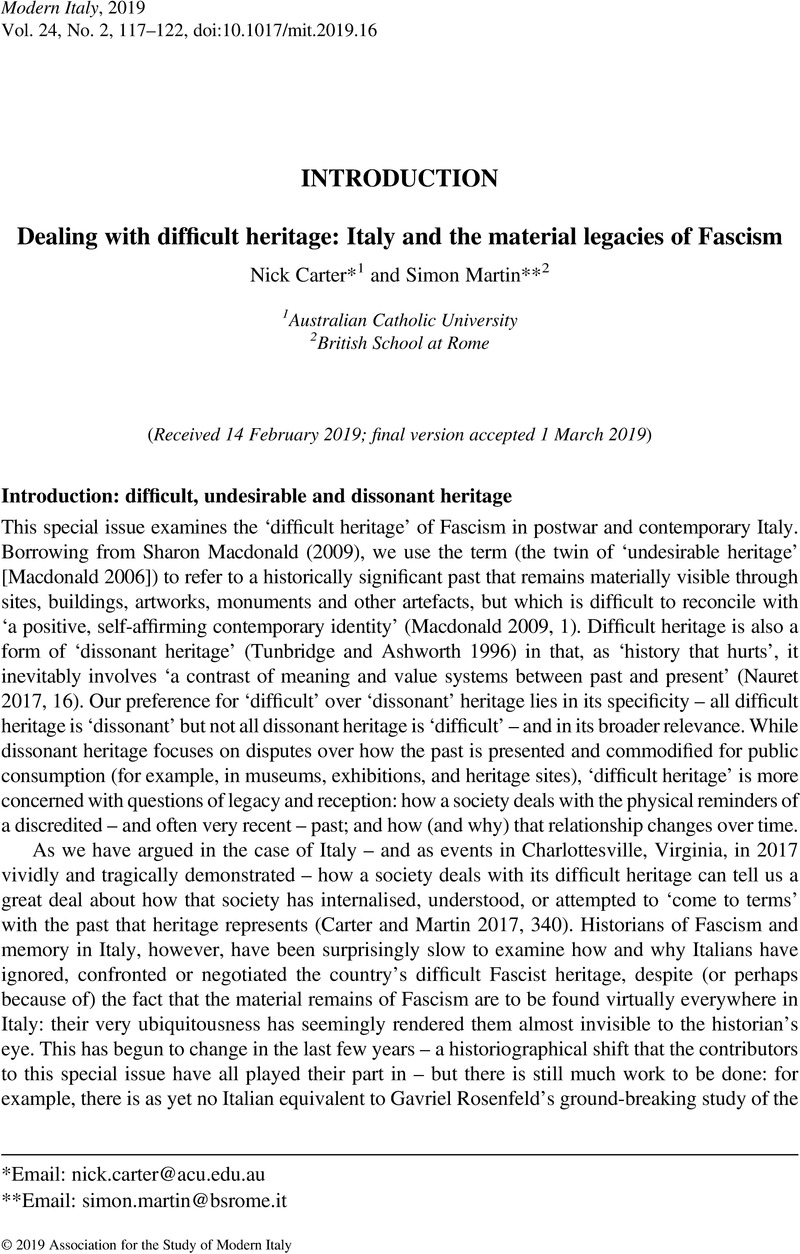Crossref Citations
This article has been cited by the following publications. This list is generated based on data provided by Crossref.
Harland, Robert George
and
Liguori, Antonia
2020.
Designing the Latina landscape: graphic images of Italian Fascism.
Journal of Urban Design,
Vol. 25,
Issue. 3,
p.
350.
Bartolini, Flaminia
2020.
Fascism on display: the afterlife of material legacies of the dictatorship.
Ex Novo: Journal of Archaeology,
Vol. 5,
Issue. ,
p.
19.
Arangio, Susanna
2021.
Collecting Mussolini: The Case of the Susmel–Bargellini Collection.
Ex Novo: Journal of Archaeology,
Vol. 5,
Issue. ,
p.
7.
Haikali, Joel
and
Dobson, Stephen
2023.
Understanding Liminality and Intangible Difficult Heritage through Film.
The Historic Environment: Policy & Practice,
Vol. 14,
Issue. 3,
p.
402.
Giambruno, Maria Cristina
and
Oteri, Annunziata Maria
2023.
Territorial Fragilities in Cyprus.
p.
63.
Miltiadis, Elena
2023.
Displacing displacement: narratives for a haunting history.
Journal of Modern Italian Studies,
Vol. 28,
Issue. 4,
p.
451.
Naldini, Silvia
Ioannou, Ioannis
Hadjimichael, Maria
Musso, Stefano F.
Pompejano, Federica
and
Dušek, Ondřej
2023.
Legislation and practice: the case of historic concrete buildings.
Journal of Cultural Heritage Management and Sustainable Development,





